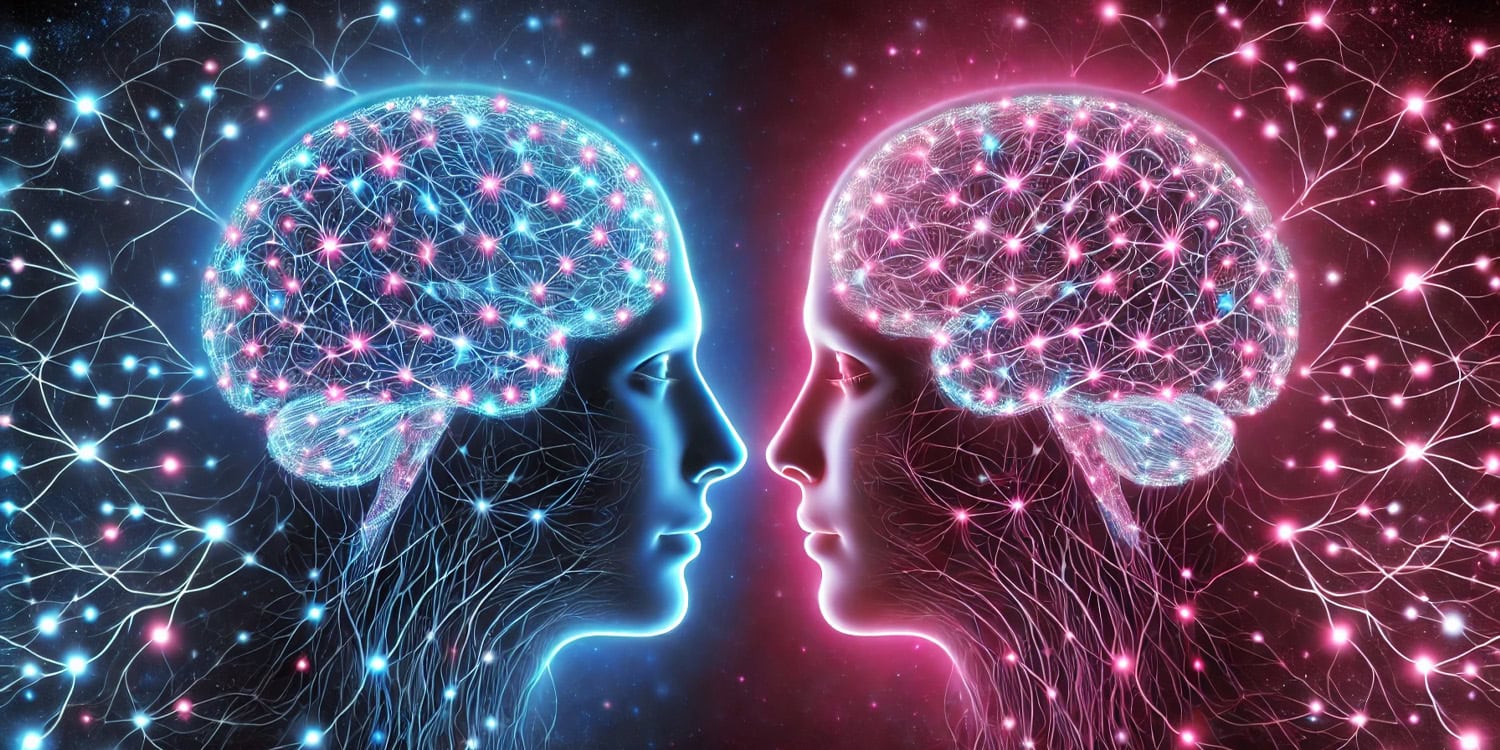Our brains seem to be especially in sync with our romantic partners when it comes to processing emotions. Recent research published in NeuroImage has found that romantic couples exhibit greater synchronization in both behavior and brain activity compared to close friends when watching emotional videos together. This finding sheds light on the deep-seated neural mechanisms that distinguish romantic relationships from friendships.
Emotions play a critical role in human relationships, influencing everything from how we resolve conflicts to how we support each other emotionally. Prior research has shown that romantic relationships, in particular, are marked by deep emotional connections that can profoundly shape our experiences and expressions of emotions. While it’s well understood that romantic partners tend to be more emotionally expressive and interdependent than friends, the specific neural mechanisms that drive this deeper emotional connection have remained largely unexplored.
The researchers behind this study sought to fill that gap by investigating how romantic relationships influence emotional coordination at the neural level. They aimed to determine whether the unique dynamics of romantic love could be reflected in brain activity, particularly in the prefrontal cortex, a brain region known for its role in regulating emotions and cognition.
“In China, we often use the verse from Li Shangyin (李商隐), “心有灵犀一点通,” to metaphorically describe the deep understanding between lovers. The verse can be translated as ‘Our hearts at one, your ears can hear my inner call,’ by Yuanchong Xu,” said study author Zhengde Wei, a professor and member of the Cognitive Neuropsychology Laboratory at the University of Science and Technology of China.
“Ever since I encountered this poem in my youth, I have been captivated by the phenomenon of intuitive connection. How can two distinct individuals forge such a profound, unspoken bond? Driven by this curiosity, I embarked on the current research to explore the neural basis underlying this fascinating occurrence.”
To explore this, the researchers recruited 25 heterosexual couples and 25 heterosexual pairs of close friends, all of whom were university students in China. The couples had been in relationships for between three months and three years, a period considered crucial for studying the neural and physiological aspects of love due to its transitional nature. The friends had known each other for at least three months and were considered close by the study’s criteria.
Participants were asked to watch a series of emotionally charged video clips while their brain activity was recorded using a technique called EEG hyperscanning. This method allows for the simultaneous recording of brain signals from two people, making it possible to measure synchronization between their neural activities. The video clips, which ranged from 50 to 250 seconds in length, were selected to evoke a range of emotions, including happiness, sadness, anger, fear, and disgust.
After watching each clip, participants rated their emotional responses. The researchers then calculated how closely the emotions of each pair were aligned, a measure known as behavioral synchronization. In addition to this, the researchers analyzed the synchronization of brain activity, particularly in the prefrontal cortex, across different frequency bands. They also used a machine learning technique called support vector machine analysis to determine whether neural activity patterns could effectively distinguish between couples and friends.
The researchers found that romantic couples exhibited higher levels of both behavioral and neural synchronization compared to close friends when watching the same emotional videos. This synchronization was particularly pronounced in the alpha frequency band, which is associated with emotional regulation and cognitive processing.
The study also revealed an intriguing relationship between relationship quality and neural synchronization. Couples with lower relationship quality showed higher levels of neural synchronization. On the other hand, couples with higher relationship quality demonstrated better behavioral synchronization.
“I was quite surprised to find that the couples’ relationship quality was significantly negatively correlated with their prefrontal synchronization, which was contrary to our expectations,” Wei told PsyPost. “Initially, we had discovered a significant positive correlation between emotional synchronization and relationship quality, so we assumed a similar result would appear in neural synchronization.”
“After repeatedly confirming this negative correlation, we spent a considerable amount of time contemplating how to interpret this finding. Ultimately, we proposed that there is a subtle relationship between relationship quality, prefrontal synchronization, and emotional synchronization, which we referred to in our paper as a compensatory relationship. When the relationship quality is low, couples may enhance prefrontal synchronization to maintain emotional synchronization.
Further analysis showed that negative emotions, such as sadness and anger, were more strongly synchronized between couples than positive emotions like happiness and joy. This finding aligns with previous research suggesting that negative emotions might play a key role in maintaining emotional bonds within romantic relationships, as understanding and managing these emotions can be vital for resolving conflicts and providing support during tough times.
The machine learning analysis supported the idea that neural activity, particularly in the prefrontal cortex, could serve as a physiological marker that distinguishes romantic relationships from friendships. The model was more accurate in classifying the type of relationship based on neural synchronization than on behavioral data alone.
“I think we need to recognize that romantic relationships and friendships are two completely different types of relationships, with distinct neural performances and underlying neural mechanisms,” Wei said. “Although sometimes some opposite-sex friends may seem very in tune or intimate with each other, they are still not lovers.”
For instance, the sample was limited to well-educated heterosexual Chinese university students, which may not fully represent the diversity of experiences and cultural influences on relationships. This could affect the generalizability of the findings to other populations. Another limitation is the focus on phase synchronization in EEG data, which, while offering high temporal resolution, does not provide detailed spatial information about the brain’s activity.
Future research could address these limitations by including a more diverse sample, examining a broader range of emotions, and employing more interactive and naturalistic paradigms. Additionally, combining EEG with other neuroimaging techniques could provide a more comprehensive picture of the neural mechanisms underlying emotional synchronization in romantic relationships.
“From a neurological standpoint, our results are still quite superficial,” Wei noted. “What is the source of couples’ prefrontal cortex synchronization? Which deeper brain regions are involved? These are questions we need to explore further in the future. At this stage, our research is preliminary, but we plan to delve deeper in future studies.”
“Interpersonal relationships are complex and constantly evolving,” he added. “This dynamic nature reminds us of the importance of considering these changes when conducting research related to social interactions. Long-term longitudinal studies might be an excellent approach to understand these dynamics better. However, the costs associated with conducting long-term experiments involving neural activities present a significant challenge. We hope that more researchers will collaborate with us to advance this field.”
The study, “Higher emotional synchronization is modulated by relationship quality in romantic relationships and not in close friendships,” was authored by Yijun Chen, Shen Liu, Yaru Hao, Qian Zhao, Jiecheng Ren, Yi Piao, Liuyun Wang, Yunping Yang, Chenggong Jin, Hangwei Wang, Xuezhi Zhou, Jia-Hong Gao, Xiaochu Zhang, and Zhengde Wei.




